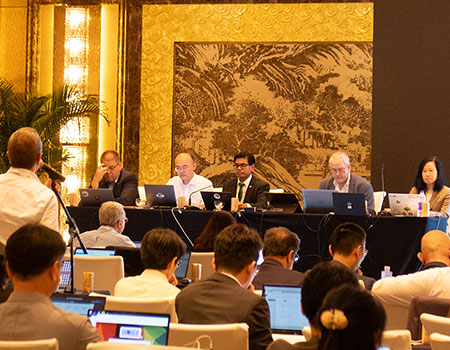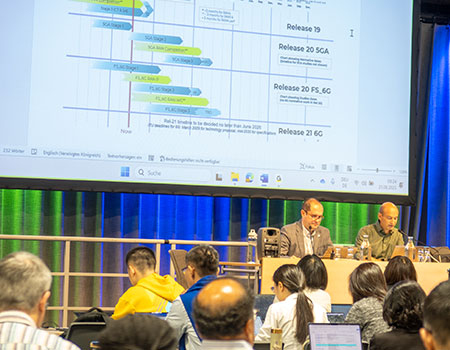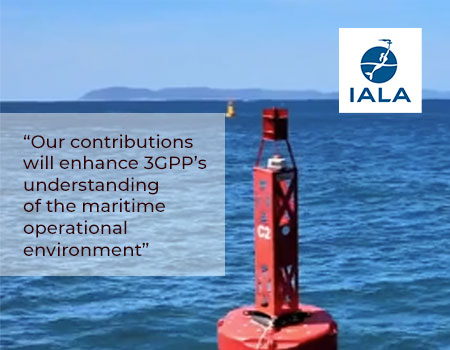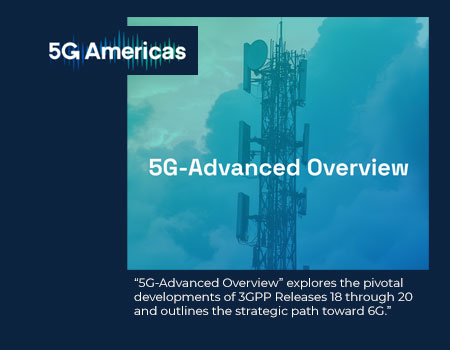By Jose Almodovar (3GPP SA1 Chair) and Alain Sultan (3GPP SA1 Secretary)
First published December 2024, in Highlights Issue 09
As for previous generations, ITU defines the 6G calendar and 3GPP develops the standardized technology that will be the project’s candidate to the ITU international mobile telecommunications (IMT) process. On this occasion, the target date for “Technology proposals for IMT-2030” has been defined by ITU to be early 2029, and resulting specifications (i.e. full system definition) are to be submitted by mid-2030 at the latest.
To meet these target dates and to give 3GPP enough time to perform relevant studies, 3GPP has concluded that two 3GPP Releases are needed to specify 6G:
- Release 20 for Studies
- Release 21 for the normative work
Given that it takes nearly two years to complete a Release, this means that the 3GPP 6G work must start…now! In practice, 3GPP has started the planning and preparation for 6G a few months ago. Working Group SA1, defining the Stage 1, is targeting to have its Release 20 study ready by March 2026. In addition, SA1 will be invited to provide status update on the study at the 3GPP-wide 6G workshop scheduled for March 2025.
All the 6G 3GPP timelines for Rel-20 are provided in the figure below. The milestones for Rel-21 have not yet been defined.
Taking the initiative on 6G
A brief reminder of SA1’s role in 3GPP may help the reader understand where each new generation enters the 3GPP sphere. Simply put, the role of SA1 is to “…consider and study new and enhanced services, features, and capabilities and identify any corresponding Stage 1 requirements to be met by 3GPP specifications.”
In mid-2023, when planning for the 6G work, SA1 organized the ‘3GPP Stage 1 Workshop on IMT2030 Use Cases’ in Rotterdam, May 8-10, 2024. This Workshop was a great success with representatives from operators’ associations, from the industry (including the “verticals”), from international research projects, academics and from ITU.
This kick-off event was followed by two regular SA1 meetings - SA1#106 (Jeju, in May) and SA1#107 (Maastricht, in August) where 3GPP companies were invited to share their vision on 6G. The output from these meetings were quite aligned with the views expressed at the Workshop and were documented in the first 3GPP 6G study item.
The SA1 6G study and TR
To better manage the wide scope of 6G, the SA1 Chair proposed a new approach, which consisted in working concurrently on both the Study Item Description (SID) and the first draft of the Technical Report (TR 22.870), i.e. contributions were asked to be provided on both documents.
Additionally, he appointed a “temporary editor” to manage and synthesize contributions for discussion at the meeting. Mona Mustapha, Apple, was nominated to take on this role, and provided the initial draft versions of the SID and TR, that were discussed and concluded upon at SA1#107. This collaborative approach was widely supported by the SA1 delegates.
The SA1 6G TR will follow the usual SA1 study approach: first identify use cases, and then derive the potential system requirements, which will be later “consolidated”, i.e. sorted, modified and combined. Then the normative phase will start in Release 21, to define the 6G system requirements. These requirements will be taken as a basis for work in other 3GPP groups.
The 6G Study Item Description was agreed in SA1#107 with the support of more than 90 companies. The agreement of the SID opens the doors for companies to contribute to use cases on the next generation of Mobile Networks.
As for the TR 22.870, its draft version resulting from SA1#107 indicates some initial 6G work areas of interest, such as System and Operational Aspects, Integrated Sensing and Communication, Ubiquitous Connectivity, Immersive Communication, etc. This initial list may be updated in future SA1 meetings during the study phase, ending March 2026. Each of these sections corresponds to one of the main areas identified in various 6G visions presented by 3GPP members.
Additionally, the TR includes a section named ‘System and Operational Aspects’ which intends to cover general considerations such as CAPEX/OPEX reduction, improvement of overall 3GPP system performance, and migration from and interworking with 5G aspects.
Finally, TR 22.870 also includes a section on ‘Other Use Cases’, introduced as a temporary place holder for agreed use cases that do not belong to any of the other sections.
Next steps
Two co-Rapporteurs have been appointed for the SA1 6G SID and TR: Xiaonan Shi, China Mobile and Jean Trakinat, T-Mobile USA.
These are key roles in the SA1 6G work, and the two Rapporteurs will manage the planning and the coordination of the work in the coming meetings, until its completion in March 2026. As these lines are written, the Rapporteurs have already taken the initiative to start some early discussions in preparation for the next SA1 meeting (SA1#108, November 2024, Orlando, Fl., USA).
As always, the WG SA1 leadership and colleagues in the group stand ready to offer support and many helping hands at the start for the new generation.
For more about WG SA1 go to www.3gpp.org/3gpp-groups



 3GPP News
3GPP News




